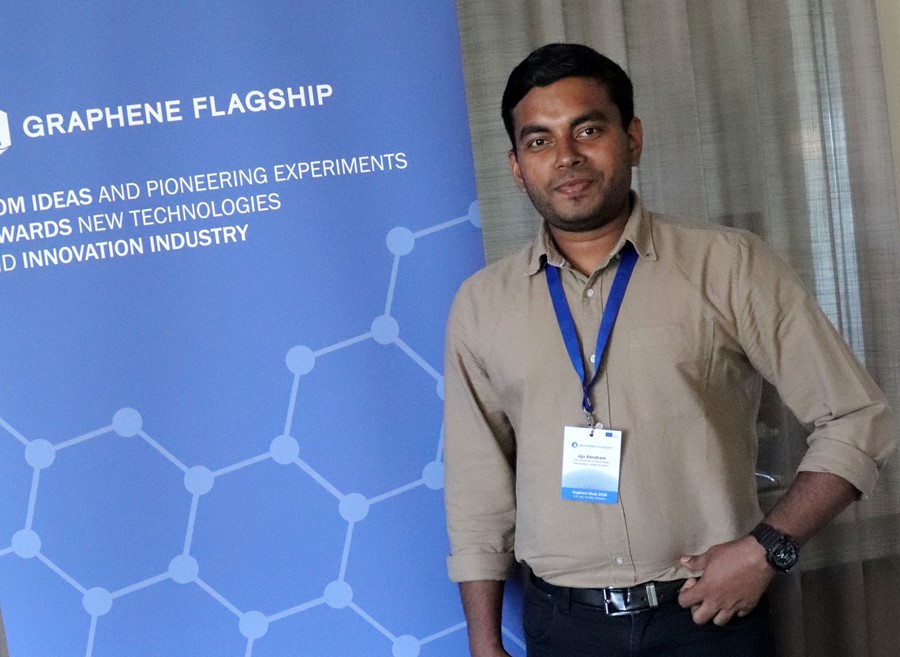Graphene Spotlight: Shining a light on up and coming researchers in the Graphenoverse
Interview with young Graphene Flagship post-doctoral researcher, Jijo Abraham
Vital Statistics
Name: Jijo Abraham
Age: 28
Institute: University of Manchester
Favourite or worst sci/fi movie?
Favourite: Interstellar
Worst: The Adventures of Pluto Nash
Here Comes the Science
Field: Materials Physics
Research: Ion permeation through Graphene Oxide membranes
Research Explained:
The work I presented at Graphene Study 2018 can be shortened into 1 sentence:
Ion permeation and selectivity of graphene oxide membranes with sub nanometre channels alters with the change in interlayer distance due to dehydration effects whereas permeation of water molecules remains largely unaffected.
Expanded, this translates to:
Graphene oxide membranes show molecular permeation properties with potential for many applications. However their use in desalination technologies require stable sub-nm channels which are difficult to achieve due to hydration mediated swelling of graphene capillaries. We have developed a new strategy to fabricate GO membranes with controllable sub-nm channels by a method called physical confinement that allows tuneable and selective permeation of ions. The novelty of our work lies in the identification of a new mechanism for ion permeation in sub-nm pores. Beyond the fundamental understanding of the transport mechanism, our results open the door for developing GO membranes with dehydration mediated ion-selectivity for water desalination and separation applications.
Why graphene:
The material I used in my study was graphene oxide; a chemical derivative of graphene obtained by the oxidation of graphite; which retains most of the important properties of graphene when preparing membranes. Properties such as graphene's thin atomic nature and low friction surface enable graphene sheet to form membranes; the large aspect ratio, mechanical and chemical stability of the exfoliated sheets further facilitates the development of other graphene based membranes e.g. GO and graphene-based composites.
What invention from the Graphene world are you most excited by:
I was most fascinated by a 2012 science paper on slip enhanced flow through a carbon surface. Following on from the work carried out by the Ruoff group in 2007, detailing the synthesis and characterisation of a GO membrane, Profs Andre Geim and Rahul R Nair found that the same membrane exhibited no resistance for the permeation of water molecules. Inside the GO membrane, a continuous interconnected capillary network drove water/ions from one side of the membrane to the other. The experiment was simple but elegant. The water that flowed through a GO membrane exhibited flow enhancement by many orders of magnitudes in comparison to the theory. This was explained by low friction against the graphene surface. The water just slipped and was carried away to the other side. We call it a slip enhanced flow. This was the discovery I am most excited by.
What are your plans for the future? Academia, industry or other?:
Academia
Your favourite property/fact about Graphene:
It is the thinnest material and the strongest

Jijo Abraham is a young post-doctoral researcher based at the National Graphene Institute, University of Manchester. This July, at Graphene Study 2018, Gothenburg, he won first place for his poster, entitled: Tunable sieving of ions using graphene oxide membranes.



